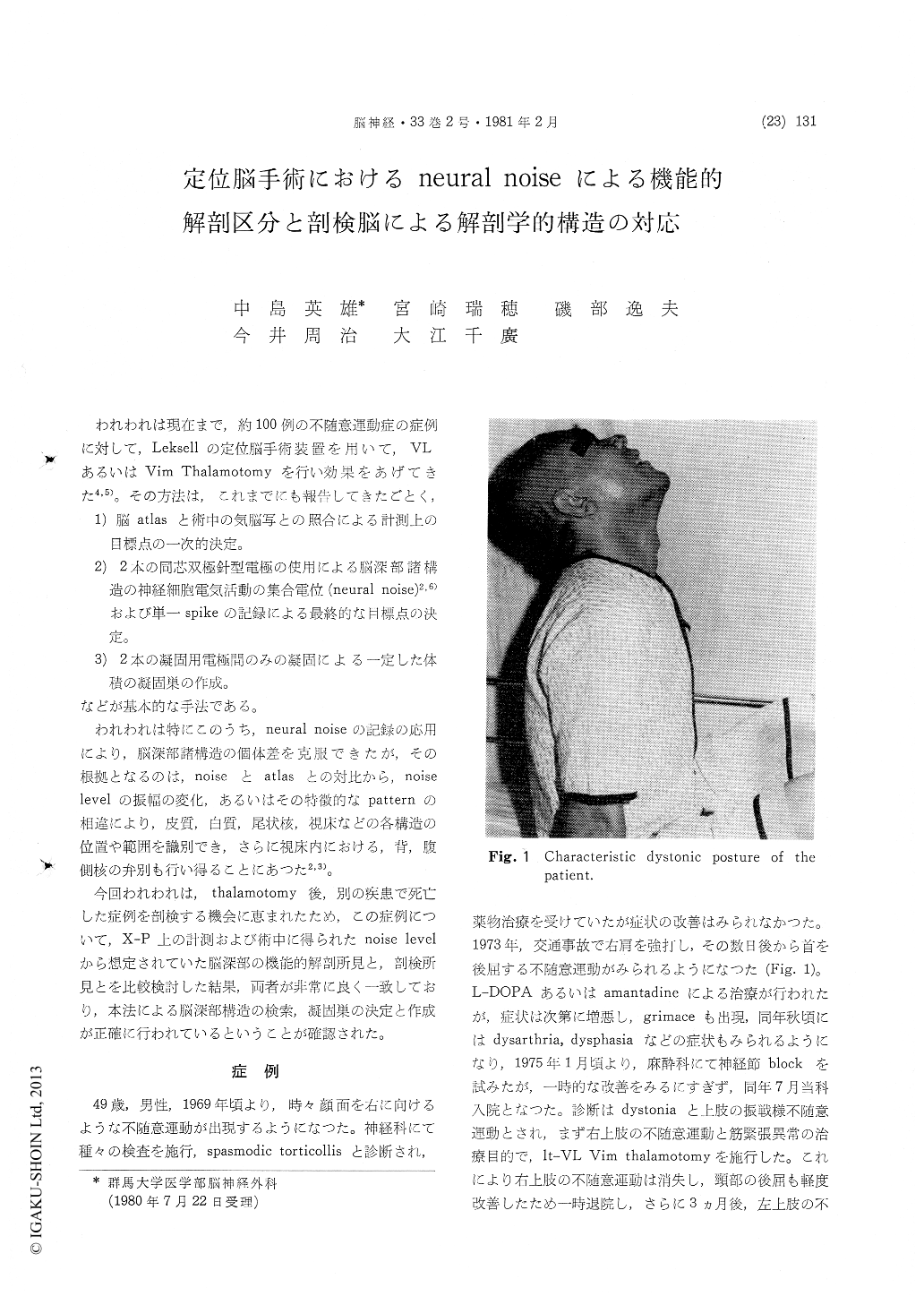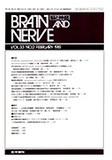Japanese
English
- 有料閲覧
- Abstract 文献概要
- 1ページ目 Look Inside
われわれは現在まで,約100例の不随意運動症の症例に対して,Leksellの定位脳手術装置を用いて,VLあるいはVim Thalamotomyを行い効果をあげてきた4,5)。その方法は,これまでにも報告してきたごとく,
1)脳atlasと術中の気脳写との照合による計測上の 目標点の一次的決定。
During the course of stereotactic thalamotomy (by Leksell's open system) for the patients with involuntary movement disorders, we have recorded the electrical activity of the subcortical structures by means of two semimicro-electrodes and correl-ated it with the anatomical substrate referring to standard atlas. Although the direct evidence have not been available until now, it was emphasized that the correlation was satisfactory and therfore this method was essential to achieve pricise opera-tion.
In this paper, one autopsy case after such phys-iologically controlled thalamotomy was reported to demonstrate a direct evidence of the agreement with postmortem anatomical study of the electrode track and electrophysiological findings during the operation.
The patient was 49 years old man. He has had tremor of the bilateral upper libms and dystonia of the neck for about 6 years. With a view to reduce the tremor and the dystonia, left VL and Vim thalamotomy was done and then three months later right thalamotomy was performed. Although the tremor disappeared, bilateral thalamotomy was not effective for the dystonia of the neck. Two months after the second operation he suffered from pneu-monia, panperitonitis and septicaemia, and he died after two weeks.
Autopsy brain (standard coronal section) showed a small damage in the frontal cortex corresponding to the entrance of the electrodes and the coagulated lesions in the bilateral ventral thalamus.
We investigted in this paper only the right hem-isphere, bcause in the left hemisphere the target point and the track of the electrodes were not so clearly visible as in the right.
Referring to the shadow of the ventricles, inter-commissure line (IC line), target point and the burr hole of the skull on the radiogram taken during the oneration, a line connecting the cortical en-trance and the lesion site was drawn on the picture of the autopsy brain slices reconstructed three di-mensionally. Then, the neural activities recorded during the operation were correlated, points to points, to the anatomical structures along the re-constructed track. It was shown that the changes in the electrical activity were closely related to the anatomical structures such as the white matter, caudate nucleus and the lateral ventral thalamus etc.
The position and the size of the coagulated lesion in the autol-sy brain was also thoroughly investi-gated, and correlated with those of the theoretical lesion estimated during the operation. It was de-monstrated that the real lesion was almost exactly placed as was expected.
It was concluded that the electrophysiologically delineated subcortical structures were coincident, in fact, with true anatomical structures of the brain, and also that the theoretical lesion site and size were almost correct.

Copyright © 1981, Igaku-Shoin Ltd. All rights reserved.


